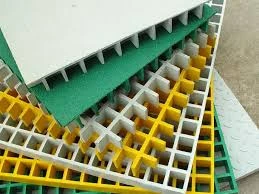loading...
- No. 9, Xingyuan South Street, Dongwaihuan Road, Zaoqiang County, Hengshui, Hebei, China
- admin@zjcomposites.com
- +86 15097380338
- Welcome to visit our website!
Innovative FRP Bridge Deck Panels for Enhanced Structural Performance and Durability
The Advancement of FRP Bridge Deck Panels in Modern Engineering
The world of civil engineering is constantly evolving, driven by the need for stronger, lighter, and more durable materials. One of the noteworthy advancements in this field is the utilization of Fiber-Reinforced Polymer (FRP) in bridge deck panels. FRP, known for its excellent mechanical properties and resistance to corrosion, is revolutionizing bridge construction and maintenance practices.
Understanding FRP Materials
Fiber-Reinforced Polymer is a composite material made of a polymer matrix reinforced with fibers, typically made from glass, carbon, or aramid. This unique combination provides FRP with exceptional strength-to-weight ratios, making it an ideal choice for various applications, particularly in environments prone to corrosion from chemicals and moisture, such as bridges.
Unlike traditional materials like concrete and steel, FRP does not corrode, which significantly extends the lifespan of structures. Consequently, bridges with FRP deck panels require less maintenance, offering long-term cost savings and enhanced safety for users.
The Benefits of FRP Bridge Deck Panels
1. Lightweight Properties One of the most significant advantages of FRP bridge deck panels is their lightweight nature. This characteristic simplifies transportation and installation, reducing the load on existing structures and foundations. Lighter components also improve the overall efficiency of construction processes, allowing for quicker project completion.
2. Corrosion Resistance Bridges are often exposed to harsh environmental conditions, including salt, moisture, and other corrosive elements. Traditional materials tend to deteriorate under such conditions. In contrast, FRP deck panels maintain their integrity and aesthetics over time, making them suitable for both urban and rural bridges.
frp bridge deck panels

3. High Strength and Durability FRP materials provide excellent tensile strength and resistance to impact and fatigue, making them ideal for high-traffic environments. They can withstand the dynamic loads and stresses imposed by vehicles, ensuring safety and longevity.
4. Versatility in Design The adaptability of FRP allows for innovative design solutions. Engineers can mold FRP panels into various shapes and sizes, accommodating unique bridge designs and enhancing aesthetic appeal. This flexibility enables architects and engineers to collaborate more effectively, pushing the boundaries of modern bridge aesthetics.
5. Sustainability With growing concerns about environmental sustainability, FRP materials stand out due to their energy-efficient manufacturing processes and potential for recycling. Utilizing FRP can contribute to greener construction practices, aligning with global efforts to reduce carbon footprints in infrastructure development.
Case Studies and Implementation
Several successful implementations of FRP bridge deck panels can be found across the globe. Notable examples include bridges in urban areas, where high traffic volumes and harsh weather significantly impact conventional materials. These projects have demonstrated significant improvements in performance, durability, and maintenance schedules compared to traditional bridge designs.
In addition, ongoing research and development aim to enhance the properties of FRP materials further, including optimizing fiber composition and polymer blends to achieve even greater performance metrics.
Conclusion
The incorporation of Fiber-Reinforced Polymer bridge deck panels marks a significant shift in modern engineering practices. Combining lightweight, corrosion-resistant, and high-strength characteristics makes FRP an attractive solution for new bridge constructions and renovations alike. As the industry continues to innovate and refine these materials, we can expect to see an even greater adoption of FRP technology in infrastructure projects, ultimately leading to safer, more durable, and aesthetically pleasing bridges that meet the demands of future generations. The future of bridge engineering is bright, with FRP paving the way for advancements that cater to the needs of our changing environment and infrastructure demands.
-
GRP Structures: The Future of Lightweight, High-Performance EngineeringNewsJun.20,2025
-
FRP Water Tank: High-Performance Storage for Corrosive and Clean Water SystemsNewsJun.20,2025
-
FRP Square Tube: The New Industry Standard for Chemical and Structural ApplicationsNewsJun.20,2025
-
FRP Pultruded Profiles: The Ultimate Choice for Lightweight Structural StrengthNewsJun.20,2025
-
FRP Handrails: The Safer, Smarter, and Stronger Choice for Modern InfrastructureNewsJun.20,2025
-
FRP Grating: The Smart Solution for Durable, Lightweight Industrial FlooringNewsJun.20,2025
-
Why Choose a Galvanized Water Tank for Your Storage NeedsNewsMay.21,2025
